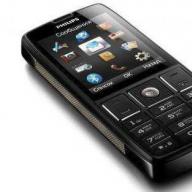Nightcore intellectual NEW i4
NEW!
Intelligent charger
Nitecore Intellicharger NEW i4
for Li-ion, LiFePO4 and Ni-MH
batteries with regulated current charge
and regulation of the final charge voltage
3,6AT, 4.2V, 4,35 AT.
Supports various types of batteries:
Li-ion / IMR / LiFePO4: 10340, 10350, 10440, 10500, 12340, 12500, 12650, 13450, 13500, 13650, 14350, 14430, 14500, 14650, 16500, 16340 (RCR123), 16650, 17350, 17500, 17650, 17670, 18350, 18490, 18500 , 18650, 18700, 20700, 21700, 22500, 22650, 25500, 26500, 26650
Ni-MH (NiCd): AA, AAA, AAAA, C, D
Nitecore Intellicharger NEW i4 is an updated version of the famous Nitecore i4 v2014 charger. Sysmax Corporation (manufacturer of Nitecore) keeps up with the modern requirements that users place on chargers. Every year, Nitecore chargers are becoming more sophisticated, and their operation is more convenient. Only in 2014, the Nitecore i4 charger received a new look - after only 2 years a new, third generation of this charger is released - the Nitecore Intellicharger NEW i4 model.
Nitecore Intellicharger NEW i4
Differences between the charger Nitecore NEW i4 and Nitecore i4 v2014:
- In the new generation of Nitecore NEW i4 chargers, it became possible to set the charge current at 1500 mA (per channel), while in previous models the maximum charge current was only 750 mA.
- The Nitecore NEW i4 charger now has the ability to charge LiFePO4 batteries, while in older models this type of battery cannot be charged. The new charger Nitecore NEW i4 has the ability to select the final voltage for charging the batteries - 3.7V, 4.2V, 4.35V, in previous generations this was not possible.
- Nitecore NEW i4 is able to activate deeply discharged Li-Ion batteries and bring them back to life.
- Active current sharing (ACD) technology implemented
These are the main differences between this charger and its predecessors. Below we will look at all the features of the new version of Nitecore NEW i4.
Nitecore Intellicharger NEW i4
Features of the Nitecore NEW i4 charger:
- Choice of charge current (up to 1500 mA);
- Versatility - one Nitecore Intellicharger NEW i4 charger is capable of charging 1.48V, 3.7V, 4.2V, 4.35V batteries;
- The charging algorithm is specially designed for IMR batteries;
- The Nitecore NEW i4 charger automatically selects the charge current depending on the capacity of the inserted battery;
- Automatic detection of faulty batteries or ordinary non-rechargeable batteries;
- Four fully independent channels for individual monitoring of each battery;
- Overcharge protection (automatic power off when the maximum charge level in the cell is reached);
- Reverse polarity and short circuit protection;
- The ability to activate deeply discharged batteries;
- The body of the Nitecore NEW i4 charger is designed in such a way that its shape provides the maximum level of heat dissipation, which prevents overheating of the batteries and the charger;
- One Nitecore NEW i4 charger is suitable for charging most of the known types of cylindrical batteries: AA, AAA, AAAA, C, D, 10340, 10350, 10440, 10500, 12340, 12500, 12650, 13450, 13500, 13650, 14350, 14430, 14500 , 14650, 16500, 16340 (RCR123A), 16650, 17350, 17500, 17650, 17670, 18350, 18490, 18500, 18650, 18700, 20700, 21700, 22500, 22650, 25500, 26500, 26650.
OPERATING MODES:
1. Automatic operation mode:
The Nitecore NEW i4 charger is automatic - you just need to insert the batteries and the charger will automatically determine the type of battery and select the optimal charging current.
2. Manual setting of the Nitecore Intellicharger NEW i4 charger:
If you want to make your own settings, just use the two buttons located above the charging compartments.
(buttons with letters C and V).
The button with the letter C is responsible for setting the charge current (Current);
The button with the letter V is responsible for setting the voltage (Voltage);
Depending on the capacity and number of batteries, the charging current is distributed according to the table:
* 1 When charging three high-power batteries, the charging current in the 2nd compartment will be 750mA, in the other two compartments it will be 375mA.
* 2 When charging three low-power batteries, the charging current in the 2nd compartment will be 500mA, in the other two compartments it will be 375mA.
Zero-charge Li-ion battery activation:
After inserting the batteries with zero charge, all four diodes will start blinking on the charger, indicating that the battery is not ready for charging. To activate, just press and hold both buttons on the charger. It is important in the process of activating the battery in the charger the reverse polarity protection will be disabled - make sure the polarity is observed! Reversed polarity in battery activation mode can result in charger failure, damage to the battery, overheating and even fire.
Overcharge protection:
The NEW i4 calculates the charging time for each battery separately. If the total charging time exceeds 20 hours, the NEW i4 will automatically stop charging the batteries and display the battery status as fully charged. This is to avoid possible overheating or explosion of batteries due to inadequate quality.
The charger is original - there is a verification code on the box, thanks to which you can check the originality of this product at any time by entering the code on the official website
Additionally, you can order a car adapter to power the charger from the car cigarette lighter.
Nitecore Intellicharger NEW i4
Equipment:
- Charger Nitecore Intellicharger NEW i4.
- Power cable from a network of 100-240 V.
- The instruction is in Russian.
- Warranty card.
ATTENTION! Auto adapter is not included in the package!
Price 1400 rub. 1300 rub. IN STOCK.
Complete with auto adapter - 1450 rubles.
Nitecore Intellicharger NEW i4
Nitecore NEW i4 is a new revision of one of the most popular models of the universal charger from Nitecore, designed to work with almost all known types of rechargeable batteries. In comparison with the previous revision, the following device parameters have changed:
The maximum current when using one channel is increased from 750A to 1500A with the ability to independently select the charging current;
The range of supported batteries has been expanded, now using the charger you can fully work with batteries capable of charging up to 4.35V;
Added the ability to restore the capacity of IMR batteries;
Added the ability to define conventional batteries that cannot be recharged;
Depending on the type of battery installed, the charger will automatically select the optimal current for recharging;
The charger now has an automatic output power distribution system.
Key features of Nitecore NEW i4:
- The new revision of the I-series charger brings to this line many functions previously inherent only in the older D-series of chargers from Nitecore;
- In the previous revision of 2014, the maximum current of the charger was 0.75A, provided that two channels are occupied. In the new model, when using one channel, it became possible to recharge batteries with a current of 1.5A. If, for example, you install batteries in 2 or more channels and select a charging current of 1.5A for each, the system will work as follows: the base batteries will be charged with a current of 375mA (in the case of using three or four channels), 500mA and 750 mA when using two channels. At the moment when one battery remains uncharged, the maximum charge current will be supplied to this slot;
- Capacious batteries are gradually appearing on the market and the developers quickly responded to their appearance by adding support to the battery charger with a maximum voltage of 4.35V. Working with them is realized on a manual level, and to use the full capacity of such batteries, you must use the V key to independently select a profile for recharging them. It goes without saying that you need to make sure that your batteries are capable of handling this maximum voltage;
- The transition to the recovery mode for over-discharged batteries of the IMR standard is carried out by holding both control keys, C and V;
- A function has been added to the charger to detect conventional batteries that cannot be recharged. When such batteries are inserted into the charger, all four LEDs in the slot will flash on the LED display, signaling an error;
- Also, the electronics of the charger is able to detect batteries that are installed upside down (reverse polarity protection). Plus, the charger implements protection against overheating of the device and is implemented as follows: if the process of recharging the batteries lasts more than 20 hours, the electronics will turn off the voltage supply to the installed batteries;
- The range of batteries supported by the device includes all possible types of batteries currently on the market;
- The housing solutions of the device use materials that are not subject to overheating, even with constant use;
Key features of Nitecore NEW i4:
- Supported Li-ion and Li-Mn battery sizes: 26650, 26500, 25500, 21700, 20700, 18700, 18650, 18500, 18490, 18350, 17670, 17650, 17500, 17335, 16650, 16500, 16340 (RCR123A), 14650, 14500, 14430, 14350, 13650, 13500, 13450, 12650, 12500, 12340, 1500, 10440, 10350, 10340, Ni-MH (NiCd) AA, AAA, AAAA, C, D;
- Input voltage: 100-220V / 9 ~ 12V 1A;
- Charging current: 375mA * 4 channels, 500mA / 750mA * 2 channels, 1500mA * 1 channel;
- Standby charging current (after charging completed): 25mA;
- Threshold charging voltage: 4.35V;
Equipment:
- Charger Nitecore NEW i4;
- Network adapter;
- User's manual;
- Blister packaging.
An overview of a rather popular but now somewhat outdated model of a universal charger that allows you to charge up to 4, including different types of rechargeable batteries. Why outdated? More on this at the end of the review.
So, the characteristics of the charging itself are as follows.
- Ability to charge 4 batteries simultaneously
- Each of the 4 slots is controlled and charged independently
- Automatic recognition of Li-Ion, Ni-MH and Ni-Cd batteries
- Supports three charge modes (CC / CV and)
- Automatically detects battery status and selects suitable voltage and charge mode
- LED indicators for charging progress for each battery
- Automatic completion of charging
- Wrong connection protection
- Design with optimal heat dissipation
Specifications:
- Black color
- Material: Plastic case
- Compatible battery types:
- (Li-Ion): 26650, 22650, 18650, 17670, 18490, 17500, 17335, 16340 (RCR123), 14500, 10440
- (Nickel-metal-hydride) / (Nickel-cadmium): AA, AAA, C
- Input voltage: AC110-240V, 50 / 60Hz or DC12V (via adapter)
- Power consumption: 10W
- Output voltage: 4.2V ± 1% / 1.48V ± 1%
- Output current: 375mA x 4 / 750mA x 2
- Device size: 13.7 x 9.5 x 3.3cm
- Package dimensions: 17.7 x 17 x 5 cm
Traditional packaging photo 
Package contents: charging, cable for connecting to the 220V network, instructions and warranty card (you can read the instructions in English) 
To realize the independence of the charger from the size of the battery, a classic mechanism is applied using a spring-loaded negative contact. 
Positive contact, also for the purpose of universality, is made in such an elongated design 
Three charge status LEDs for each of the 4 compartments in a battery-shaped frame (resembles a battery charge indication of a mobile phone) 
Side and bottom view


On the back panel there is a connector for connecting a car adapter (included in a more expensive kit) and a socket for connecting a power cable for a 220 Volt network.

As it turned out, this type of nest is found in some types of office equipment, in particular, in inkjet printers.

At the same time, the power cables are, respectively, almost identical, so if a cable with a flat plug is found in the kit with a charger, it can be easily replaced with a Euro analogue (in my case, the kit came with the "correct" cable)
More pictures


Then, as usual, an autopsy.
Take women and children away from screens! Scenes of Cruelty (18+)
To access the screws, you need to dig out four legs 
Here is the first thing that appears before us after removing the cover 

To assess the quality of workmanship and soldering, I give a comparison with a photo of a printed circuit board of exactly the same charge (No. 2 is our copy) 
As you can see from the photo - although the printed circuit boards are the same, all the Chinese are still different :)
View from the other side 
The only remark I had about soldering one of the springs, as you can see in the photo below, the second spring on the right is practically not fixed and is held by a hook. 
I considered that this was not good and taking the soldering iron as best I could, corrected the situation. 
Putting the whole thing back and plugging it in.
No-load contact voltage

For some reason, the idea immediately came to my mind to check the charging for the adequacy of the perception of a knowingly dead battery (the notorious white-green BTY AA2500 :)
Contact voltage - absent

By the simultaneous blinking of three LEDs on the active channel, the charging confirmed that "the patient is more likely dead than alive ..."

Next, a known healthy battery was involved

… But here it was inserted obviously incorrectly; upside down. Again, by the simultaneous blinking of three LEDs on the involved channel, the charging seemed to question my adequacy ...

As if having understood the hint, I turn the battery over to the correct position, which is immediately perceived by charging as a guide to action, and after testing the battery, two LEDs light up, the third upper one starts blinking, showing that there is quite a charge, you just need to "top up"

As always, without really delving into the instructions for the device, I stuff it into the charger for each of the compatible standard sizes of the batteries available in the house and measure the voltage during charging (I did not measure the current, because at that time I did not know how to do it :)



One channel was left unused and another 18650 was placed in it.
After a couple of hours, the charging began to heat up noticeably, I decided to fix this circumstance, since the device allows it.
The temperature inside the charger (in degrees Celsius)

Temperature in the ward (i.e. for each patient)




Anxiety was caused by the smallest green "patient" whose temperature jumped to 43 degrees at the final stage of charging.

At the same time, the neighboring battery of course also warmed up, but not so much.

After charging was complete, the small green AAA battery began to cool down slowly, passing the baton to the extreme 18650, for whose health I really began to worry about fixing this result

So that the patient does not give up the ends before the completion of charging, a radiator from an ancient processor was used. The effect was not slow to show

Fortunately, everything worked out, everyone survived.
The above was done as part of the first evening of acquaintance with the charger.
Before receiving this model, I already knew that in fact it has two independent charging channels 1 and 2, one more to each of them was added “virtually” and thus four channels numbered 1-3 and 2-4 are obtained.
The degree of warming up of the batteries upset me greatly. I was connected with the fact that I put an 18650 can and a pinky AAA in the connected channels, but why then there was no such warm-up on the other channel? The next evening, I tried to install identical batteries in the connected channels. For this, pre-planted 2x18650 and 2xAAA were used. 
All this economy was charged and, as luck would have it, did not heat up in the process.
Subsequently, I experimented many times with various options for installing different types of batteries, but the initial "hot effect" was no longer observed, so what could have caused it I did not understand.
Let's also look at the charging readings, especially since they showed me how to measure the current
So, we have pre-planted 1x18650 and 1xAA 

We put the batteries in the connected channels 1 and 3 and measure the voltage supplied by the charging 
What is a "virtual" channel. When batteries are placed in connected channels, the voltage supplied to one physical (1 or 2) channel is, as it were, divided between two (1-3 or 2-4) and is supplied to each channel alternately. The photo below shows that at some point the device shows the absence of voltage on the charging contacts, after which the voltage appears and so it happens cyclically. 

We measure the charge current


I rearrange the AA battery into an independent channel, the charge current has become even greater

For the sake of interest, I add a couple more, the current dropped a little

During the charging process, as I mentioned above, the temperature of both the device and the batteries did not rise significantly.
At the end of the charging process, all three LEDs are on above each of the charged batteries, the power on the contacts disappears. Voltage after charging


What do we end up with?
On the one hand, it seems to be a good device with some intellectual capabilities, simultaneous charging of several different types of batteries, some kind of indication of the process of work and the termination of charging at the end.
On the other hand, the "intelligence" inherent in the device cannot be influenced in any way and you need to put up with it, only the developers know by what principle this device determines the required current strength and how it understands that "the client has already had enough." Thermal protection does not seem to be provided, the manufacturer claims some kind of effective heat removal system, which consists of gratings on the sides of the case.
In general, despite the ambiguous feeling, I think that charging is quite interesting, if it had no flaws at all - it would probably be an analogue of LaCrosse with a similar price tag :) and so, for Chinese batteries it is quite enough.
At the beginning, I mentioned that this model is already outdated.
So, the manufacturer went further and on the basis of this device muddied a more advanced one called ""
The new model is equipped with an LCD screen that displays the current state of operation: battery type, charge current, voltage, elapsed time and remaining time, and is also equipped with as much! two buttons that allow you to slightly adjust the "intelligence" of the device and, in particular, switch the charge current. In addition, the manufacturer has expanded the list of chemistry supported by accumulators.
From a sad point - it seems that things have not advanced with cooling, the same "effective" heat sink. It is possible and understandable, why make an ideal device right away, and then what? And so there is still something to work on, maybe the temperature sensor will start chatting in version 5-6, or maybe at 7-8 they will also teach to discharge ...
Well, the price tag - it is "only" about twice as high as that of the hero of the review, it starts from 40 bucks :(
The device was provided for review free of charge.
Thank you for attention.
Hello dear vapers, in one of my last reviews I already told you about the Chinese charger MiBoxer C4 ( ), which proved to be quite good in practice. Today I would like to talk again about universal chargers, only now we will look towards a more eminent manufacturer who gave the world more than one charger, not a single battery and not one flashlight. From the title, you could probably understand that we are talking about the company Nitecore and about charging i4, but already in its modified version. The new charger is packed with new features and new capabilities.

Nitecore NEW i4 - this is a new, more precisely, an updated version of the already well-known charger, which has established itself among those. Who constantly uses batteries. The new device can charge batteries of different form factors with amperage up to 1500 mA per channel and with a current of 750 mA per two channels. Compared to the previous version, the new "charging" is capable of charging batteries several times faster than the same i4 (up to 1000mA), and this significantly reduces the charging time.

With the help of new technologies, i4 can automatically determine the capacity and types of nutrients, and only then, after processing the data, the appropriate charging current is applied, based on either automatic detection or manual adjustment. Another feature of the new charger is that it can recover depleted IMR batteries.
The device works with all types of rechargeable batteries, this will allow you to use it as a universal device and you do not need to own several charges for different types of batteries. It is a new, technological device with a mode of efficiency, compatibility and intelligence. In addition to all of the above, the new charger "got" a screen with which you can monitor the charging process.

Supported batteries:
IMR / Li-ion / LiFePO4:
10340, 10350, 10440, 10500, 12340, 12500, 12650,
13450, 13500, 13650, 14350, 14430, 14500, 14650,
16500, 16340 (RCR123), 16650, 17350, 17500,17650,
17670, 18350, 18490, 18500, 18650, 18700, 20700,
21700, 22500, 22650, 25500, 26500, 26650
Ni-MH / Ni-CD:
AA, AAA, AAAA, C, D

Distinctive features:
1) The body is made of heat-resistant materials;
2) Current strength - up to 1.5A per channel;
3) Temperature control function (overheating protection);
4) Ability to charge 4 batteries at the same time (different format factors can be used);
5) Protection against overcharge, against reverse polarity, against short circuit;
6) Ability to manage each slot separately;
7) Ability to restore discharged batteries.

Specifications:
1) Voltage (output) - AC (100-240V), or DC 12V (2.5A);
2) Current (output) - 375mA × 4 / 750mA × 2 / 1500mA × 1;
3) Charging (voltage) - 4.35V ± 1% / 4.2V ± 1% / 3.7V ± 1% / 1.48V ± 1%;
4) Dimensions - 140mm × 95mm × 37mm.
Detailed video review:




